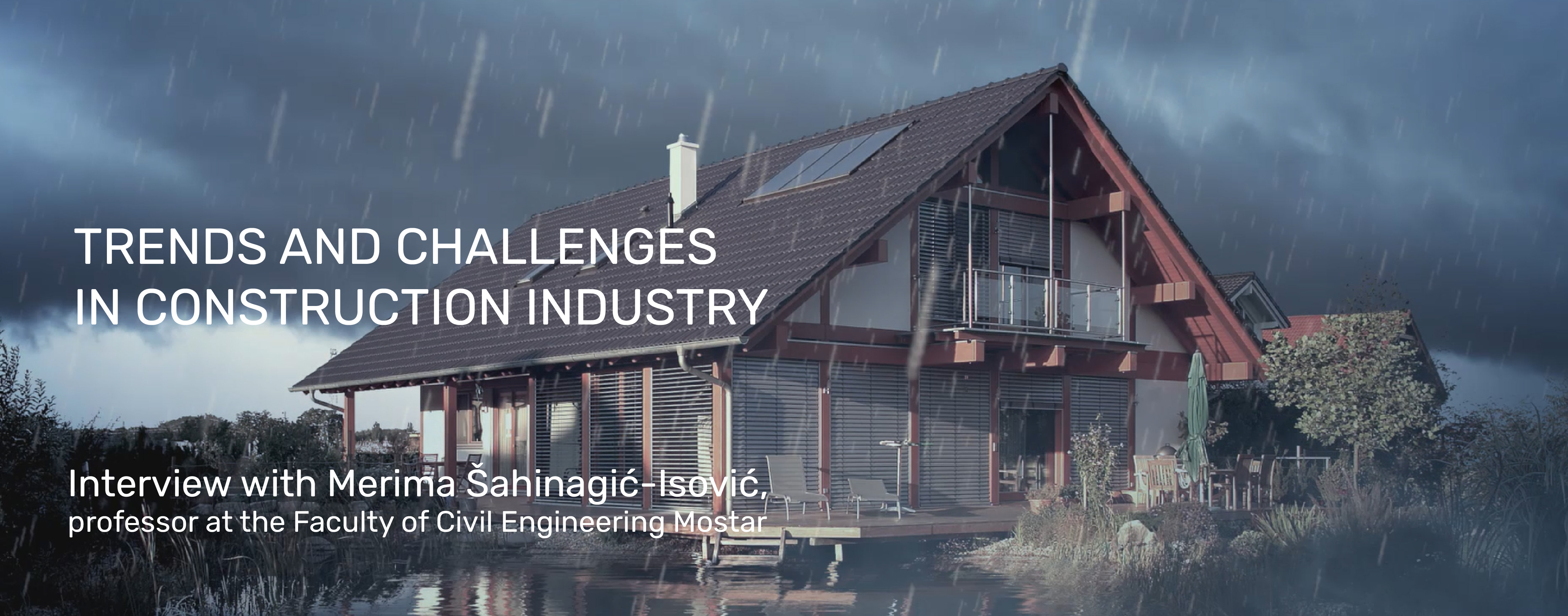Interview with Merima Šahinagić-Isović, full professor at the Faculty of Civil Engineering, University "Džemal Bijedić", Mostar, Bosnia and Herzegovina.
1/3 - Part one.
1. Tell us something about yourself
My narrow research specialty in the field of construction is the field of building materials and structures. For the last decade, I have been particularly interested in research in the field of durability of structures, and I am one of the first teachers in Bosnia and Herzegovina who teaches the subject Durability and maintenance of structures. Within this area, I study the energy efficiency aspects of existing and new buildings, and the life cycle of buildings and materials. In the context of this issue, I published the book "Elements of Environmental Infrastructure Systems Sustainability", in which I am one of the authors. One part is entirely devoted to the topic of durability of structures.
New trends in construction are focused on research into the use of by-products from industrial production (waste) as additives in the production of composite materials and their components. Therefore, in recent years, my team and I have been engaged in experimental research of local by-products as additives in mortars and concretes. My last book, "Application of red mud in construction", which deals with the problem of this waste material and its application, came from this research.
2. What are the trends in the construction industry
For the last few years, the sustainability criterion has entered the construction industry and methods for its uniform and standardised application in practice are being developed intensively. This approach dictates the introduction of sustainability already at the construction design stage and in the selection of materials. Optimisation in three dimensions is sought, with ecological, economic, and socio-cultural aspects being considered at the same time. Sustainable construction is extremely important for sustainable development in general, due to the great influence of the construction industry on the individual and society as a whole. Sustainability is defined as a measurable dimension, by developing methods for sustainability analysis.
A large number of methods have been developed for analysing the sustainability of building materials and building structures. One of the methods used to determine the impact of a product or building (as a building product) on the environment is life cycle analysis (LCA). The LCA analysis, defined by ISO 14000, includes several steps in which all processes related to the product under analysis are analysed and described. In addition to the production processes of the product in question, it is necessary to include all related processes that precede it, as well as processes that are their consequence. Legislative consideration of sustainability criteria is the future of sustainable construction and buildings.
3. Challenges and opportunities in the construction industry
The construction industry is the oldest and most important branch of technology. As a very important segment of the economic development of every country in the world, construction is one of the main indicators of the development and prosperity of society, and it attracts a lot of attention from analysts.
Construction, as a driving economic branch, is today the largest consumer of various types of materials, and therefore one of the largest producers of waste. Construction waste should be recognized as a priority problem to be solved.
Construction waste, according to the definition, is waste generated during the construction of buildings, reconstruction, removal, and maintenance of existing buildings, and waste generated from excavated material that cannot be used without reprocessing for the construction of the building whose construction it was a by-product.
Construction waste is generated, for the most part, due to the demolition of buildings, and the reasons for the demolition of a building can be different. Due to the need to modernize the central city zones, fundamental reconstructions of buildings are often carried out, whereby dilapidated buildings, or buildings that will change their purpose, are usually partially or completely demolished. Also, due to degradation over time and limited operational life (aging and dilapidation of the building), many buildings need to be replaced with new, technically and economically more favourable solutions. The resulting waste construction material is removed from those locations and disposed of in landfills. Another form of this type of waste is caused by numerous devastating disasters, both natural (earthquakes, floods, fires) and man-made (wars, terrorist attacks). After such occurrences, it is inevitable to clear the rubble and remove the waste construction material.
The reasons for the need for increased utilization of construction waste are multiple:
- knowledge about limited natural resources and the need for rational use of what is available (natural aggregates – gravel, sand, and technical building stone, which are the basic non-renewable resources used in construction),
- increasingly strict regulations on environmental protection, which mandate the proper management of construction waste,
- difficulties in finding locations for new construction waste dumps,
- price of present waste disposal.
To be continued...



 EN
EN  SL
SL  HR
HR  IT
IT  SR
SR  BG
BG  BS
BS  RO
RO  DE
DE 
